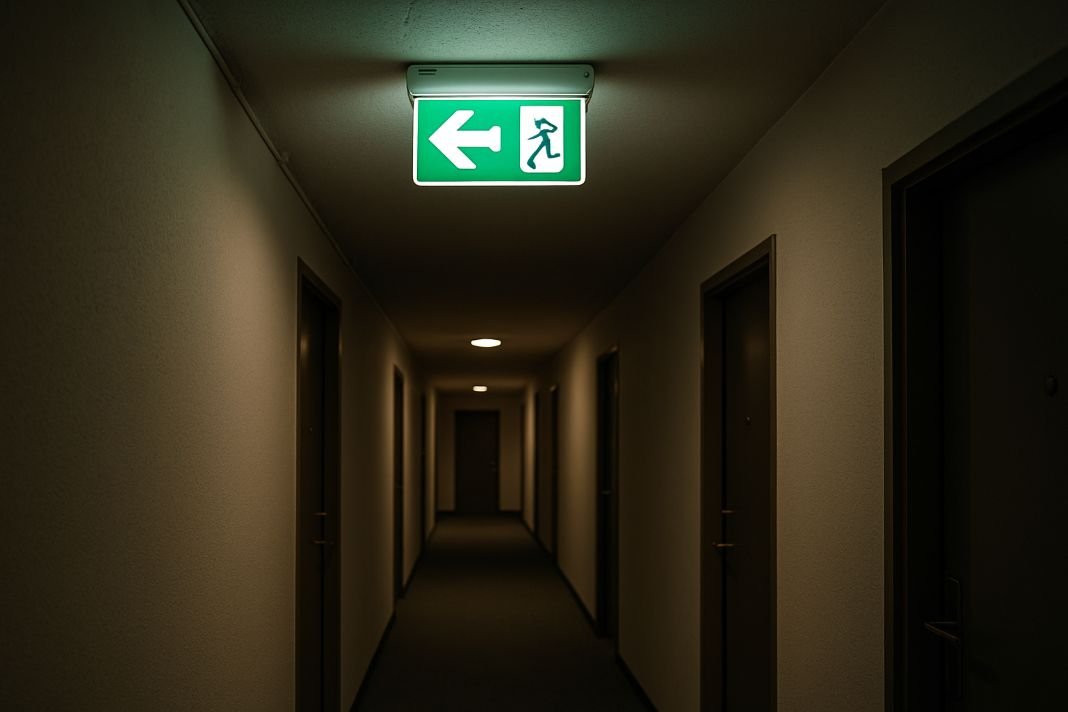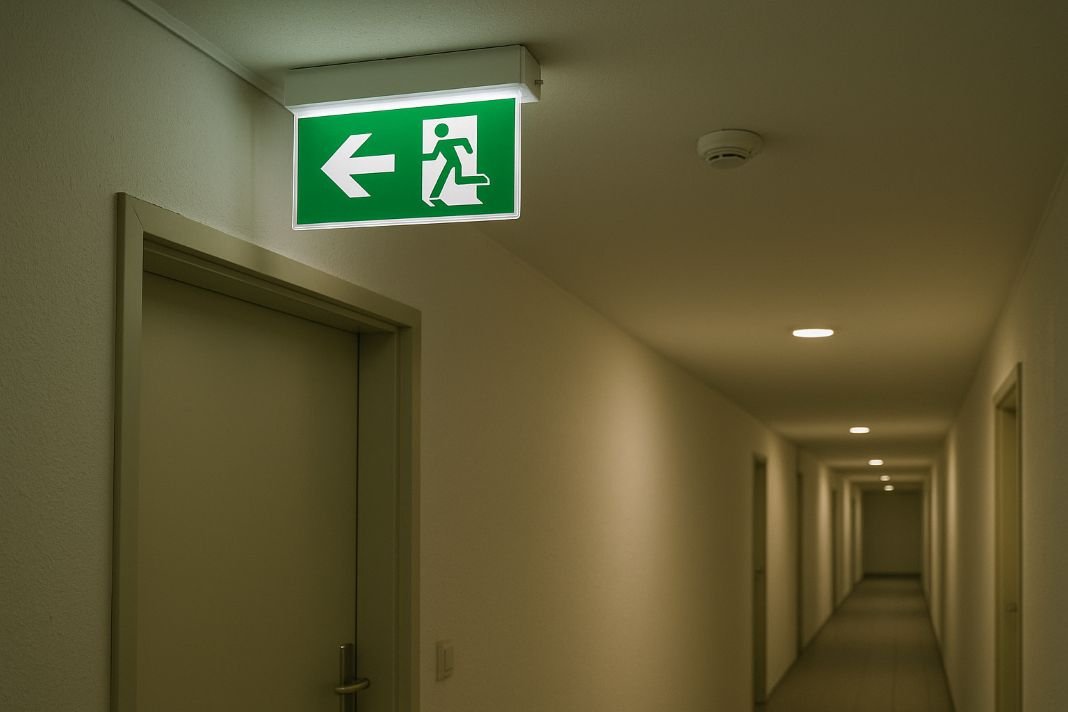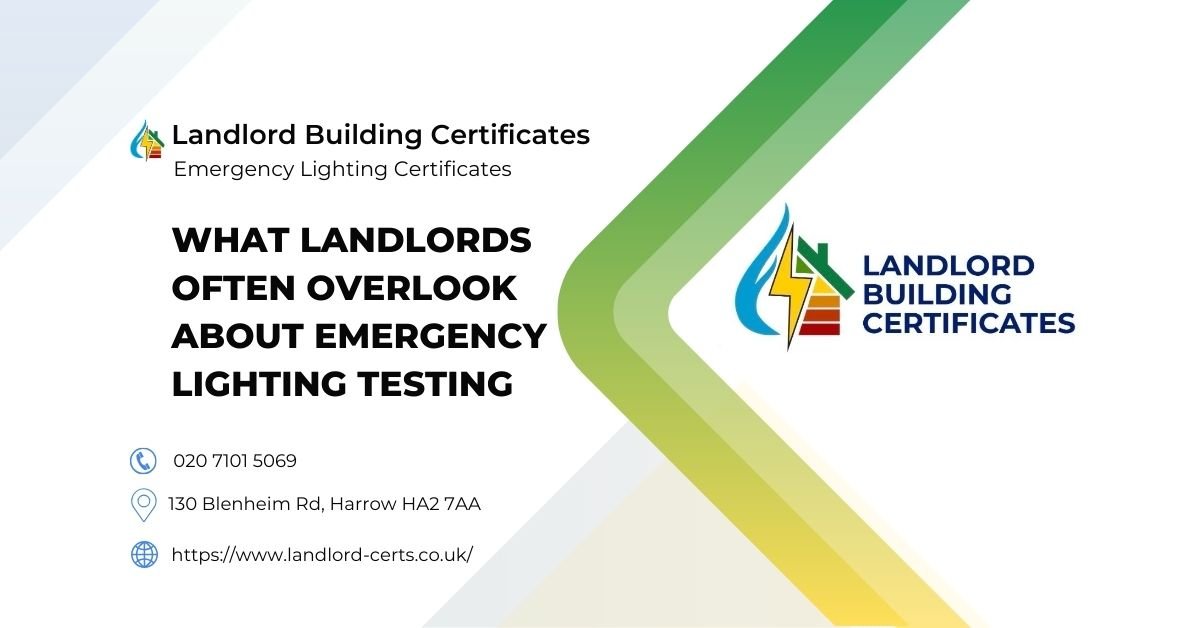Here's What We Have Covered In This Article
What are the emergency lighting rules for HMOs and single lets?
When is emergency lighting legally required in UK rentals?
BS 5266 Part 1 and the Regulatory Reform Fire Safety Order 2005 make it clear that landlords must maintain emergency lighting in escape routes. This is especially the case for HMOs, but single lets may also require lighting depending on the layout and findings of a fire risk assessment.
What are the core landlord responsibilities?
-
HMOs must have emergency lighting in shared areas such as hallways and staircases
-
Single lets require an assessment. Lighting is typically recommended if escape paths are long or poorly lit
-
New builds and conversions are usually expected to include emergency lighting to meet building control approval
What do housing officers check during inspections?
-
Lighting coverage in escape paths and stairwells
-
Functional emergency fittings near fire doors
-
Up-to-date certificates or written records of testing
FAQ: Do single lets always require emergency lighting?
Not always. If escape routes are short and have good natural or borrowed lighting, a fire risk assessment may show that emergency lighting is not needed. However, that decision must be documented properly.
What gets missed in monthly and daily emergency lighting checks?
The annual test tends to get more attention, but small and frequent checks often get skipped. These simple checks help spot early signs of failure.
What should daily checks include?
-
Look at the LED status lights on all emergency fittings
-
Check that no lights are blocked by objects or furniture
-
Visually confirm no obstructions are covering signage or corridor lighting
How should landlords carry out the monthly flick test?
-
Use the emergency test switch to simulate a power cut
-
Confirm the light stays on while power is disconnected
-
Reset the system and record the outcome using date stamping in the logbook
Why does proper documentation matter?
-
Maintain a paper or digital log with a clear inspection schedule
-
Record dates, names, issues found, and repairs
-
Keep the log for at least five years
What is the full duration discharge test and who can carry it out?
Why is the annual full duration discharge test important?
This test confirms that emergency lights work for a full three hours during a power failure. It checks that batteries are in good condition and the fittings are reliable. This test is required once a year and should be done by a trained professional.
What are the test steps?
-
Cut mains power and observe emergency light performance
-
Watch for signs of battery weakness or flickering
-
Verify battery recharge after the test to ensure full power returns
-
Replace fittings that do not last the full duration
-
Log results on an inspection certificate for your records
FAQ: Who is qualified to conduct the annual test?
The test should be performed by someone with experience and a good understanding of BS 5266 Part 1. This is usually a qualified electrician or a fire safety contractor.
Why could proper documentation save landlords thousands?
Accurate records can be the difference between passing or failing an inspection. If there is a claim or complaint, good documentation can prove the landlord acted responsibly.
What should your records include?
-
Dates and types of each inspection
-
Who completed the test and what was found
-
Any follow-up actions taken
-
Details of repairs or replacements
-
Evidence of compliance such as fault logs and inspection certificates
How long should records be kept?
-
Keep all records for at least five years
-
Secure digital files are acceptable if backed up properly
How does documentation protect landlords?
-
Shows compliance with regulations
-
Supports claims in the event of fire or injury
-
Demonstrates your duty of care to tenants
What do landlords need to know about insurance and compliance?
Some insurance policies have specific requirements for emergency lighting. If a claim is made and the lighting is found to be faulty or poorly documented, the insurer could reject the claim. Keeping records updated and performing regular tests can prevent costly disputes and offer strong compliance evidence.
Pro Tip: Always document every lighting test using date stamping even daily checks.
Need Emergency Lighting Testing Done Right?
We handle full duration discharge tests and logbooks so you stay compliant with zero stress.
Have you rechecked your emergency lighting coverage after renovations?
How can layout changes affect emergency lighting?
Adding a loft room, moving walls, or converting shared spaces can affect how emergency lights cover escape routes. These changes often go unchecked unless specifically reviewed.
What should landlords check after building work?
-
Walk through each escape route and look for dark spots or coverage gaps
-
Test lights near new doorways and corridor junctions
-
Update your fire risk assessment following refurbishment inspection
-
Document the compliance update and install new fittings if needed
What do landlords often get wrong about wiring and system complexity?
Do landlords always need to rewire for emergency lighting?
Usually not. Many modern fittings are designed to be added to existing systems without full rewiring. This reduces cost and disruption.
What are the wiring options for emergency lighting?
-
Self contained units work independently and are easy to install
-
Central battery systems are suitable for large blocks with multiple zones
-
Retrofit options let you upgrade existing fittings without ripping out wiring
FAQ: Will I need to change the wiring in my rental property?
Not likely. Most landlords can use self contained or retrofit fittings that work with the current setup. However, in larger properties or older systems, you may need circuit testing to ensure safe fuse box integration or assess any daisy chain wiring present.
Who qualifies as a competent person for emergency lighting?
A competent person is someone who understands emergency lighting systems and the rules set out in BS 5266 Part 1. Electricians are usually required for full discharge tests and installations. For basic checks, landlords or letting agents can do the job if they know what to look for and keep accurate records.
Not Sure If You’re Fully Compliant?
Don’t risk fines or voided notices over a missed rule. Our assessors know London homes.
Is emergency lighting testing really that expensive?
Many landlords expect testing to cost a lot, but the actual figures are manageable. Planning your tests alongside other property checks helps reduce callout costs. If you do a daily visual check yourself and a monthly flick test it is free. An annual full duration test can cost anywhere between £100 to £250 in London. We charge less than the average for emergency lighting certificates at £90.
What are some practical cost saving tips?
-
Combine checks with other safety inspections
-
Install self testing units to reduce manual work
-
Keep good records to avoid penalties or reinspection fees
Quickfire checklist: how to keep emergency lighting covered without overwhelm
-
Check that LEDs are lit every day as part of your inspection cycle
-
Use the emergency test switch for monthly flick tests
-
Book a competent person for the annual full duration discharge
-
Record everything with date stamping in your logbook or digital file
-
Reassess lighting after layout changes or refurbishments
-
Keep documentation ready as compliance evidence for inspections



